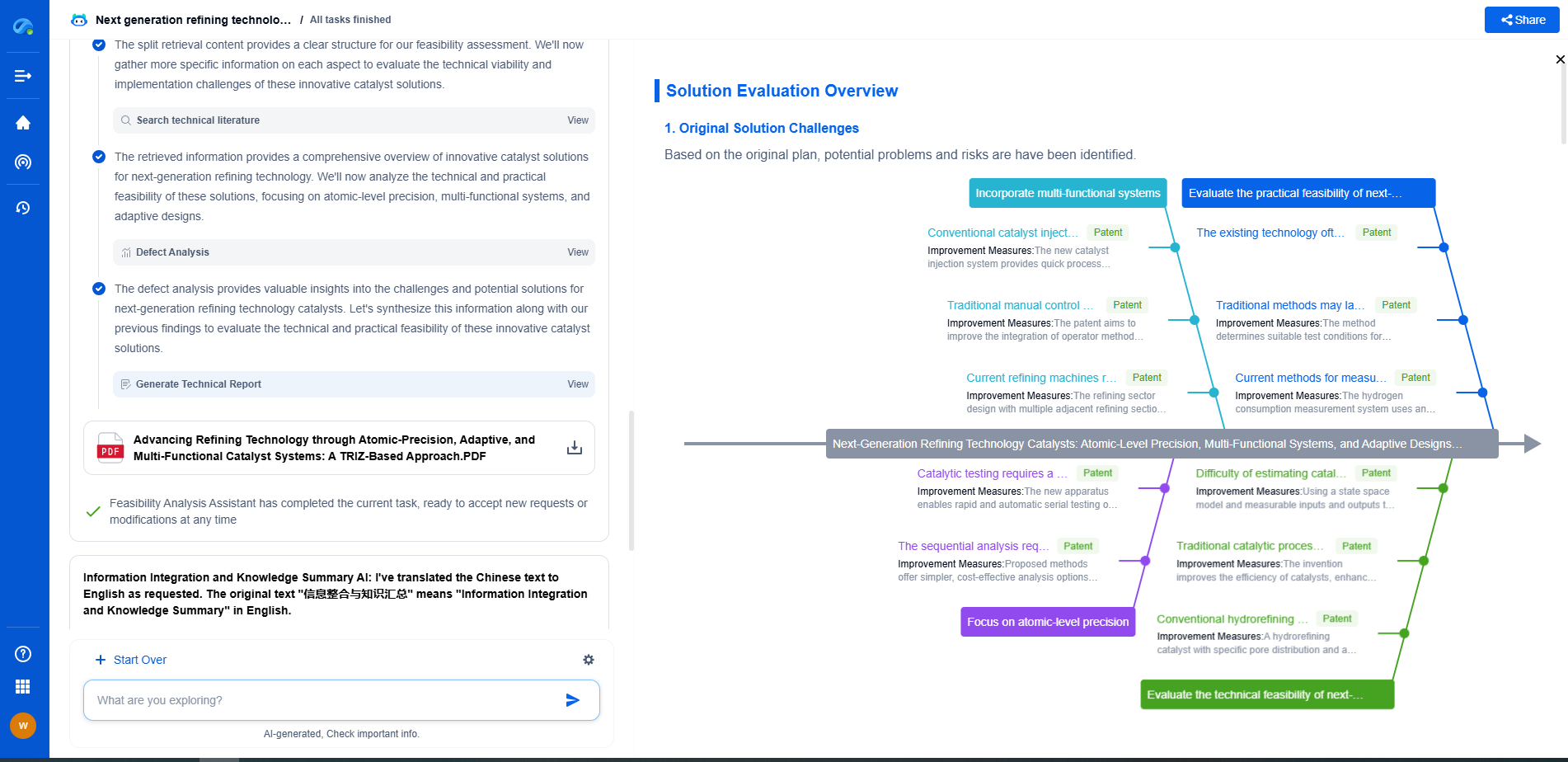How are soft robotics applied in medical settings?
JUN 26, 2025 |
Introduction to Soft Robotics in Medicine
Soft robotics represents a revolutionary leap in the field of robotics, designed to mirror the flexibility and adaptability of living organisms. Unlike traditional rigid robots, soft robots are constructed from highly compliant materials, enabling them to interact safely and effectively with the human body. In medical settings, this unique characteristic opens up a plethora of applications, enhancing both diagnosis and treatment processes.
Enhancing Surgical Procedures
One of the most promising applications of soft robotics in medicine is in the field of surgery. Traditional surgical robots, while highly precise, can be limited by their rigid structures. Soft robotic systems, on the other hand, offer the ability to perform minimally invasive procedures with greater dexterity and less trauma to surrounding tissues. Their flexibility allows them to navigate complex anatomical environments, reducing recovery times and improving surgical outcomes. For instance, soft robotic arms can be used in laparoscopic surgeries to provide surgeons with enhanced control and precision, thereby improving the overall surgical experience.
Improving Rehabilitation Therapies
Soft robotics has also made significant strides in the rehabilitation sector. Robots designed from soft materials can be used in physical therapy to assist patients with mobility issues or recovering from injuries. These robots can be tailored to provide gentle assistance, mimicking natural movements and adjusting to the unique needs of individual patients. By providing consistent and adaptive support, they help speed up recovery and improve the range of motion. This application is particularly beneficial for stroke victims or individuals with neurodegenerative diseases, offering a personalized approach to rehabilitation that adapts to the patient’s progress.
Advancing Patient Care and Assistance
In the realm of patient care, soft robotics offers innovative solutions for patient assistance and monitoring. Soft robotic devices can be integrated into wearable technology, providing continuous health monitoring and support for patients with chronic conditions. These devices can be programmed to administer medication, monitor vital signs, or provide reminders for various health-related tasks. Furthermore, soft robotic exoskeletons can assist individuals with limited mobility, helping them perform daily activities and enhancing their independence. The gentle interaction of soft robots ensures safety and comfort, making them ideal companions in patient care scenarios.
Revolutionizing Diagnostic Techniques
Soft robotics is also at the forefront of revolutionizing diagnostic techniques in medicine. Soft robotic endoscopes, for example, offer a less invasive and more patient-friendly option for internal examinations. Their flexible design allows them to navigate the intricate pathways of the human body with minimal discomfort, providing high-quality images and data for accurate diagnosis. This application reduces the need for invasive exploratory procedures, lowering the risk of complications and enhancing patient comfort.
Conclusion: The Future of Soft Robotics in Healthcare
The integration of soft robotics in medical settings is transforming the healthcare landscape, offering safer, more efficient, and patient-centric solutions. As technology continues to evolve, the potential applications of soft robotics in medicine will likely expand, paving the way for innovations that improve patient outcomes and revolutionize the standards of care. While challenges remain in terms of scalability and cost, ongoing research and development are set to address these issues, making soft robotics an integral part of future medical practice. As we continue to explore and refine these technologies, the possibilities for improving human health and well-being are boundless.
Ready to Redefine Your Robotics R&D Workflow?
Whether you're designing next-generation robotic arms, optimizing manipulator kinematics, or mining patent data for innovation insights, Patsnap Eureka, our cutting-edge AI assistant, is built for R&D and IP professionals in high-tech industries, is built to accelerate every step of your journey.
No more getting buried in thousands of documents or wasting time on repetitive technical analysis. Our AI Agent helps R&D and IP teams in high-tech enterprises save hundreds of hours, reduce risk of oversight, and move from concept to prototype faster than ever before.
👉 Experience how AI can revolutionize your robotics innovation cycle. Explore Patsnap Eureka today and see the difference.
- R&D
- Intellectual Property
- Life Sciences
- Materials
- Tech Scout
- Unparalleled Data Quality
- Higher Quality Content
- 60% Fewer Hallucinations
Browse by: Latest US Patents, China's latest patents, Technical Efficacy Thesaurus, Application Domain, Technology Topic, Popular Technical Reports.
© 2025 PatSnap. All rights reserved.Legal|Privacy policy|Modern Slavery Act Transparency Statement|Sitemap|About US| Contact US: help@patsnap.com

